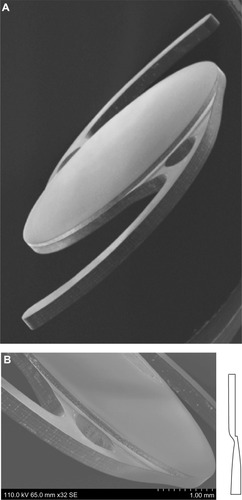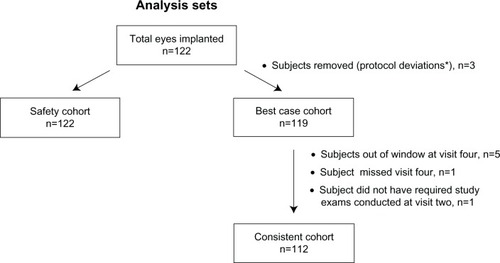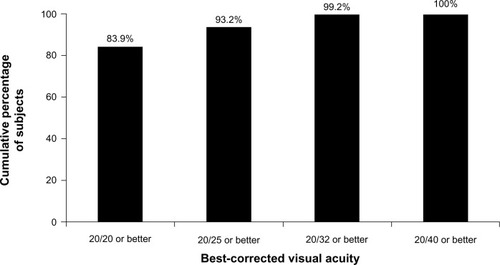Figures & data
Table 1 Eligibility criteria
Figure 1 (A) Design of the MX60 intraocular lens (Bausch & Lomb, Rochester, NY, USA). (B) Posterior surface facing toward the right side of the page. The haptics are offset anteriorly with respect to the optic body, which enables consistent posterior movement of lens optic under haptic compression. Images courtesy of David Spalton, FRCS, FRCP, FRCOphth.

Figure 2 Flowchart showing the basis for distribution of subjects into each analysis cohort.

Table 2 Subject demographics (n = 122)
Table 3 Ocular adverse events in safety-analysis set (n=122)Table Footnote*
